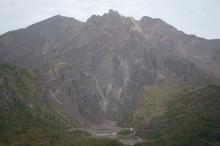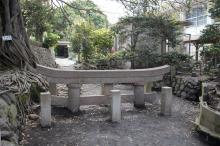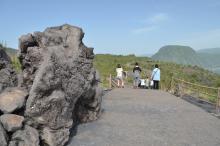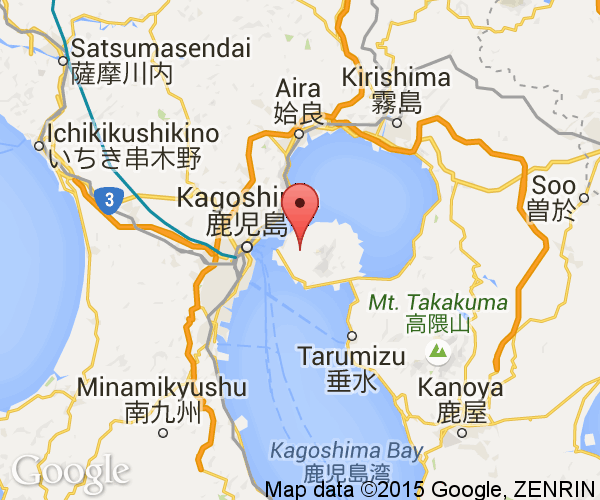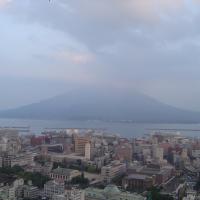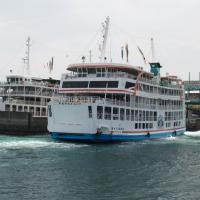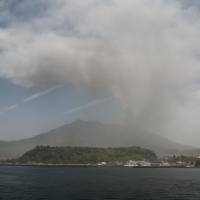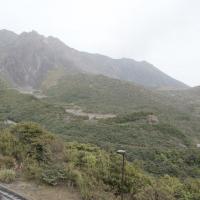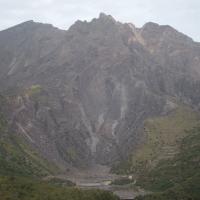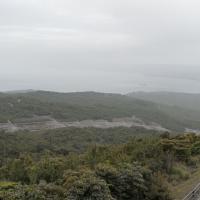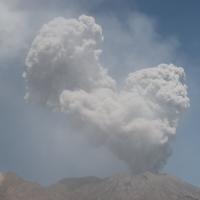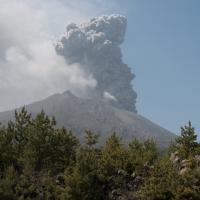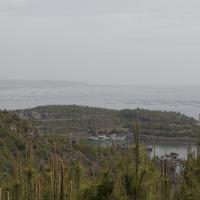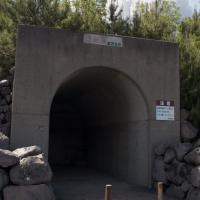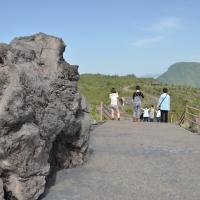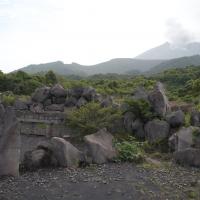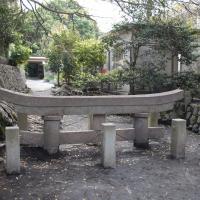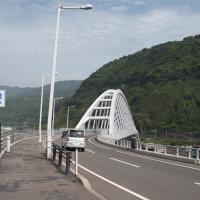Kagoshima City
Sakurajima
Sakurajima (桜島), one of Japan's most active volcanos, is located in southern Kyushu. A symbol of the area, the 1117 meters volcano dominates the north-end of Kagoshima Bay. No trip to Kagoshima City, which is on the west side of the bay across from the volcano, is complete without watching Sakurajima send up another plume of fine ash in one of the minor eruptions that occur hundreds of times a year and then hopping on the ferry to get a closer look.
Incredibly, many people choose to live on the volcano's more stable (and usually upwind) west side. Still, residents often start the day by sweeping off the night's accumulation of ash from walkways and storefronts. The rich volcanic soil is one reason people are attracted to live in the towns that hug the coast in places of relative safety. Sakurajima daikon, a local cultivar of radish, is famous for its size (6 kg/13 lb) and mild flavor. Oranges, including the smallest variety of mandarin, are grown here as well.
At one time, Sakurajima was an island as its name implies (島/shima or jima - island), but the last major eruption in 1914 produced lava flows that created a land bridge to Ōsumi Peninsula. It is thought that land first pushed up above Kagoshima Bay some 11,000 years ago. Records for some 30 major eruptions exist. Today, the volcanic cone that sits above sea level is sightly oval with the east-west diameter being 12km and north-south diameter being 10 km. The Showa crater on the east side is most active.
Tourism - Near Ferry Dock
The former island is still usually reached via ferry from the port in Kagoshima City. After disembarking, there are a number of places to visit in the area.
Sakurajima Visitor Center
The visitor center has displays about the volcano, maps, information about the island and a gift shop. A video (in Japanese) about the volcano can be watched in the theater.
Nagisa Lava Trail
This 3 km trail starts at the visitor centre and passes by lava fields. The seaside path leads to Karasujima Observation Point. Karasujima was small island that was connected by lava in the 1914 eruption.
Nagisa Park and Foot Bath
This park's main attraction is a 101m long natural hot spring foot bath. Relax your feet while looking out over the ocean.
Sakurajima Magma Onsen
Utilizing a spring that wells up from 1000m below ground, the onsen provides a way to come in contact with the volcanic power of the former island. This is located within National Lodgings Rainbow Sakurajima. The hotel also has a restaurant.
Dinosaur Park
It takes 15 minutes to walk up a winding path to this park aimed at children from the terminal. The kids can have fun playing on the life-sized concrete models of dinosaurs. The park has nice cherry blossoms in the spring.
Hinoshima Megumikan
Local produce, gifts and other goods can be bought here. They operate a restaurant that serves the local produce as well.
Tourism - Around the Island
The further attractions can be visited by bus (tour or local), car and the dedicated cyclist.
Yunohira Observation Point
Yunohira is highest observation point at 373m. As it is an active volcano, this is as close as tourists are allowed to go. It is on the safer west side of Sakurajima and looks out on an older inactive crater. The cityscape of Kagoshima can be seen here as well.
Kurokami Shrine Gate
This gate on the east side was buried by pumice and ash during the 1914 eruption. It was left in the ground as reminder of the eruption. Today, it is a popular spot to stop and take a photo in front of.
Kurokami Observation Point
While a mostly unremarkable, the Showa crater is visible at a fair distance from this point on the east side of Sakurajima.
Arimura Lava Observation Point
This spot in the southeast is one of the best for looking at the lava fields. A 1 km trail leads through the area to a number of viewing spots. The hardy plants you can see here survive on what was rock 100 years ago. Dotted throughout the area are emergency shelters. The Showa crater is mostly visible here.
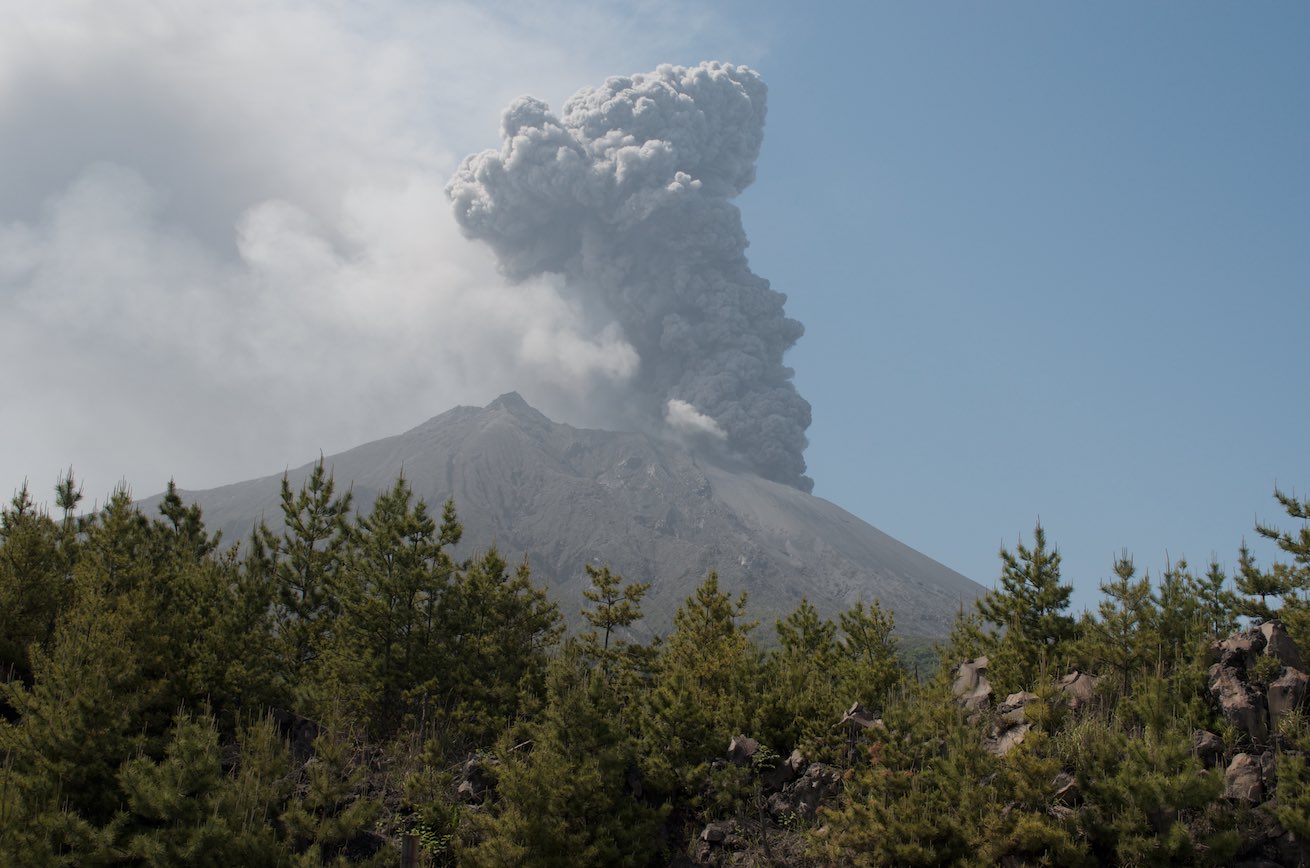
Getting There
Sakurajima is east of Kagoshima City. The city operates the ferries that cross Kagoshima Bay between the port and Sakurajima. The ferries run 24 hours a day with no scheduled days off. There is at least one crossing per hour. The crossing takes around 15 minutes. The fare for one adult is a reasonable 160 yen. Cars are 880 yen.
On the east side of the Sakurajima, the road that travels the perimeter meets up with those on Kyushu where Sakurajima connected to the bigger island during the 1914 eruption. Vehicles can just drive off. Interestingly, the main road that goes north uses a bridge at the connection of the two roads. While scenic, the road is not as fast as that on the west side and there are no large cities on the east side of Kagoshima Bay.
Posted: August 16, 2015 Updated: August 16, 2015
